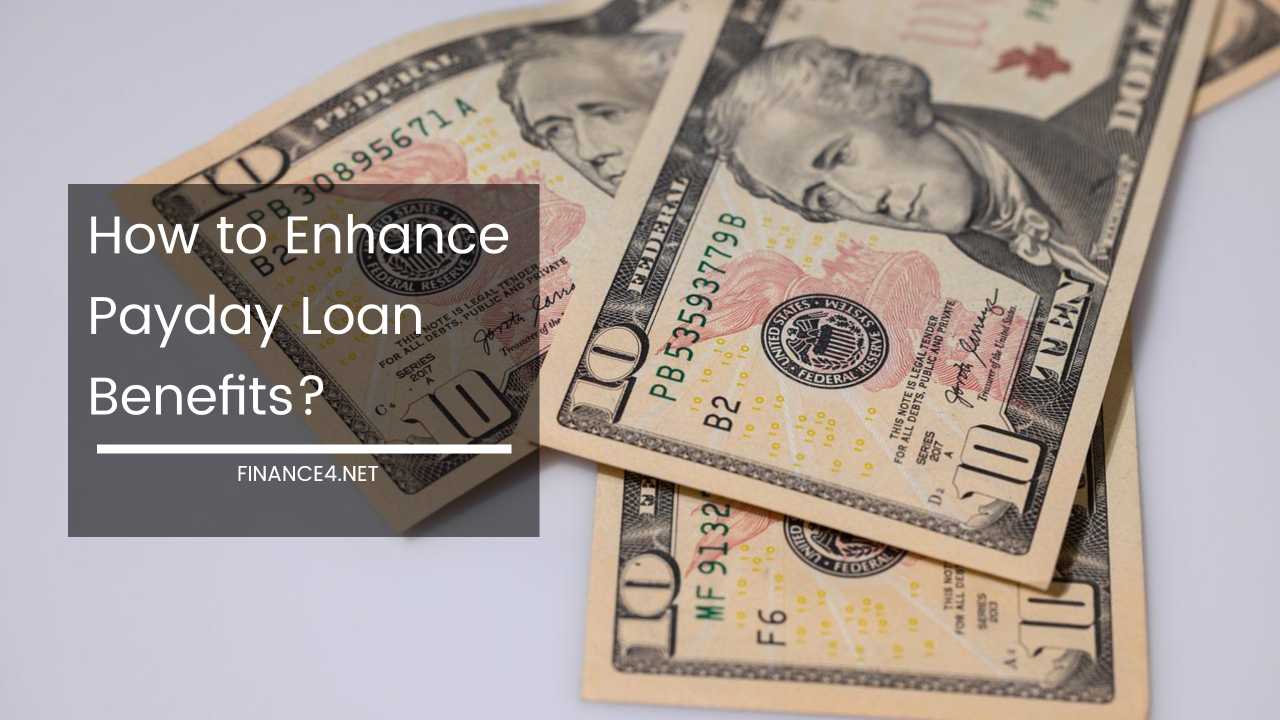How to Enhance Payday Loan Benefits?

The Deceptive Facade of Payday Loans: Prioritizing Sustainable Financial Solutions
The Illusion of a Lifeline: Unveiling the Reality of Payday Loans
Payday loans are often presented as a quick and convenient solution to bridge financial gaps until the next paycheck. While they might appear accessible, particularly for individuals with limited financial resources, the reality paints a far grimmer picture.
This revised text delves deeper into the inherent risks of payday loans and emphasizes the crucial need for prioritizing responsible financial strategies.
The Glaring Red Flags: Unveiling the Predatory Practices
-
Exorbitant Interest Rates: Payday loans come with predatory interest rates, typically ranging between 400% and 770% APR. This translates to a small loan snowballing into an immense financial burden. Even a seemingly manageable $200 loan can accrue interest charges exceeding the original amount within a few weeks.
-
Debt Trap Cycle: The short repayment period, often two weeks, makes complete repayment highly improbable for most borrowers. This forces individuals to take out another loan to cover the previous one, along with the accumulated interest, pushing them deeper into a cycle of debt.
-
Focus on Short-Term Gains, Ignoring Long-Term Issues: Payday loans address immediate needs but fail to address the underlying financial issues that lead to dependence on such high-cost borrowing. These loans do not equip individuals with the tools or resources to manage their finances effectively.
Beyond Payday Loans: Exploring Viable Alternatives
Financial stability cannot be built on the quicksand of payday loans. Prioritizing alternative solutions should be the cornerstone of any financial strategy.
-
Building an Emergency Fund: Cultivating a habit of consistent saving, even small amounts, is crucial. Over time, these savings can accumulate into a buffer to handle unexpected expenses, eliminating the need for resorting to predatory loans.
-
Negotiating with Creditors: Open communication with creditors can provide temporary relief. Explaining your situation and seeking an extension on payments might be a viable option. Creditors are often willing to work with borrowers who demonstrate a willingness to address their financial obligations.
-
Community Resources: Several government assistance programs offer financial aid, counseling, and even assistance with budgeting and debt management. Non-profit organizations and charities can also be a source of support during times of financial hardship.
Addressing Misleading Information and Promoting Financial Literacy
The previous portrayal of payday loans often contained misleading information:
-
Repayment: While the text emphasized applying for loans that can be repaid easily, the exorbitant interest rates render true affordability highly improbable. Even with minimal borrowing, the interest charges become substantial, making repayment a significant challenge.
-
Prepayment: Prepaying to avoid high fees might seem like a benefit; however, it highlights the excessive cost associated with late payments, underlining the inherent risk of these loans. Ideally, financial circumstances should not necessitate relying on such high-cost temporary fixes.
-
Easy Application: The ease of obtaining a payday loan downplays the seriousness of taking on high-interest debt. Individuals might underestimate the long-term financial consequences of succumbing to the allure of instant cash.
-
Focus on Short-Term Solutions: The information solely focused on acquiring the loan rather than offering guidance on responsible borrowing or escaping the debt cycle. Financial literacy and long-term financial planning are crucial aspects that were neglected.
Empowering Individuals Through Financial Education:
Financial literacy empowers individuals to make informed financial decisions and avoid the pitfalls of payday loans.
-
Understanding Interest Rates: Grasping the true cost of borrowing through APR (Annual Percentage Rate) is fundamental. Individuals should be aware of how even a seemingly small interest rate can significantly inflate the loan amount over time.
-
Budgeting and Managing Expenses: Creating a realistic budget that tracks income and expenditure is vital. This allows for informed financial decisions and avoids situations where unexpected expenses lead to seeking quick fixes like payday loans.
-
Debt Management Strategies: Seeking help from qualified financial advisors or credit counseling agencies equips individuals with the tools and knowledge to manage debt and develop a plan for achieving financial stability. These professionals can provide guidance on budgeting, debt consolidation, and exploring alternative solutions.
The True Cost of Expediency: A Stark Comparison
Even for borrowers who manage to repay the loan on time, the exorbitant interest rates make payday loans a highly expensive and unsustainable solution.
Here’s a compelling comparison:
- Scenario 1: Responsible Borrowing: Borrowing $200 from a friend or family member with a reasonable interest rate (e.g., 5%) and a two-week repayment period would result in an interest cost of approximately $1.50
- Scenario 2: The Payday Loan Trap: Borrowing $200 with a typical payday loan APR of 400% for two weeks translates to an exorbitant interest cost of around $60. This highlights the excessive burden placed on borrowers who rely on payday loans.
This stark contrast emphasizes the importance of prioritizing alternative solutions and fostering a culture of responsible financial management.
The Societal Impact of Predatory Lending:
Payday loans not only exploit vulnerable individuals but also contribute to a wider web of negative consequences:
-
Increased Financial Strain: The cycle of debt created by payday loans traps individuals in a state of financial instability, hindering their ability to save for the future or address other financial obligations.
-
Mental and Emotional Stress: The constant pressure to repay high-interest loans can lead to significant mental and emotional stress, impacting overall well-being.
-
Strain on Social Services: Individuals trapped in the cycle of payday loan debt are more likely to rely on social services for basic necessities, placing a strain on already stretched resources.
Building a Sustainable Financial Future:
Achieving financial stability requires a multi-pronged approach:
-
Promoting Financial Literacy: Educational initiatives focusing on budgeting, responsible borrowing, and debt management are crucial to empower individuals to make informed financial decisions.
-
Addressing Predatory Lending Practices: Stricter regulations and limitations on interest rates for payday loans can help curb predatory lending practices and protect vulnerable borrowers.
-
Encouraging Access to Affordable Financial Services: Expanding access to alternative financial products and services, such as small personal loans with reasonable interest rates and longer repayment terms, can provide individuals with safer and more sustainable options during financial hardships.
Final Remarks: Prioritizing Long-Term Stability Over Short-Term Fixes
Payday loans offer a deceptive solution that ultimately exacerbates financial hardship. Financial well-being requires a commitment to responsible financial planning, building an emergency fund, and seeking professional guidance when needed.
By prioritizing financial literacy, promoting access to affordable financial services, and advocating for stricter regulations on predatory lending practices, we can empower individuals to build a secure financial future and break the cycle of debt.
Additional Resources:
- National Foundation for Credit Counseling: https://www.nfcc.org/
- Consumer Financial Protection Bureau: https://www.consumerfinance.gov/



